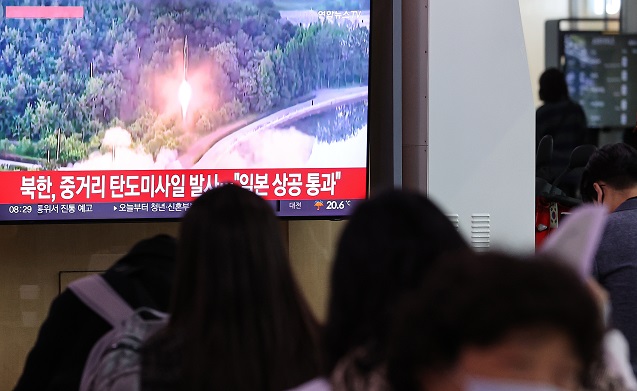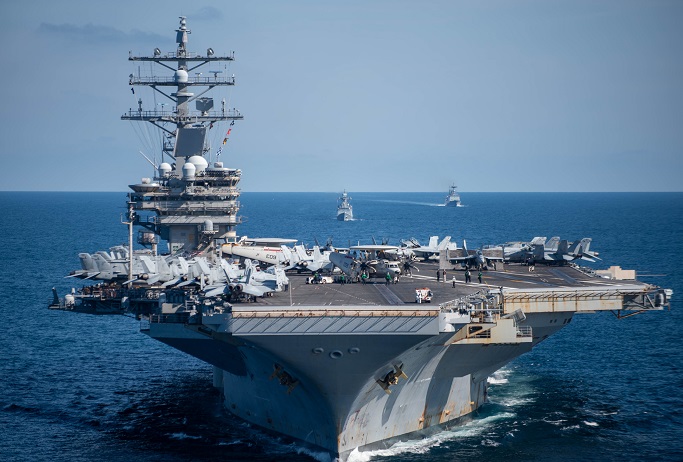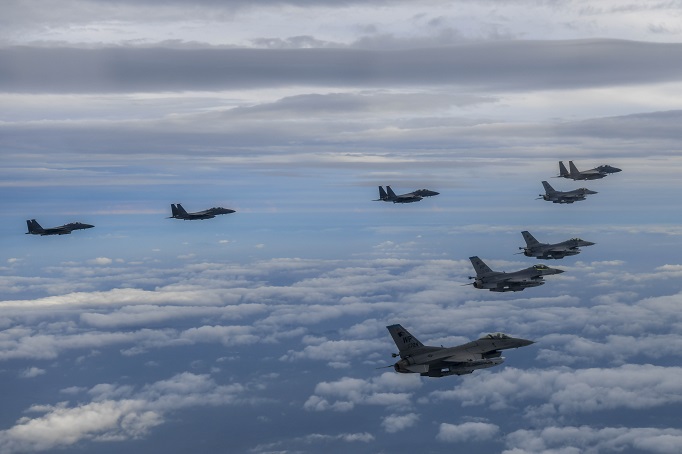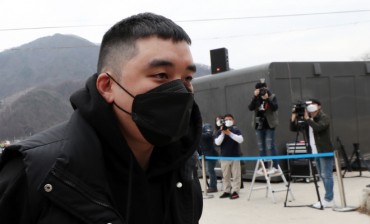
Citizens watch the news at Seoul Station in central Seoul on Oct. 4, 2022, when North Korea fired an intermediate-range ballistic missile over Japan. (Yonhap)
SEOUL, Oct. 8 (Korea Bizwire) — Tensions on the Korean Peninsula appear to be on a perilous escalatory trajectory, with North Korea dialing up nuclear and missile threats, and South Korea and the United States determined to make “stronger-than-before” responses, analysts said Friday.
In just under two weeks, Pyongyang has staged six rounds of missile provocations, including Tuesday’s launch of an intermediate-range ballistic missile (IRBM) that overflew Japan.
The allies have staged tit-for-tat exercises, including Friday’s naval drills involving the USS Ronald Reagan aircraft carrier.
The recalcitrant regime’s provocative mode is feared to culminate in what would be its seventh nuclear test. The allies have publicly warned that it would be met with a “strong and resolute whole-of-government” response.
For the time being, the North is likely to double down on its weapons testing drive to bolster its bargaining power for future negotiations with the United States and help deflect public attention from domestic travails caused by COVID-19, concomitant border controls and biting economic sanctions, according to analysts.
“Based on its confidence over its self-proclaimed nuclear power status, Pyongyang could continue to unleash provocations to a point short of crossing the threshold for war,” Nam Chang-hee, professor of international politics at Inha University, said.
“Ultimately, the North may seek to set the tone for negotiations, where it can wring maximum concessions from the South, the United States and Japan so as to surmount challenges at home,” he added.
“That would be North Korean leader Kim Jong-un’s bold game down the road.”
Tuesday’s IRBM launch has taken Seoul, Washington and Tokyo aback as the missile flew over the Japanese archipelago in the first such case in five years — a sobering reminder that the North’s missile threats go way beyond the peninsula.
The missile launch triggered the redeployment of the nuclear-powered USS Ronald Reagan carrier to waters east of the peninsula Wednesday.
The carrier held trilateral drills with the South and Japan in the waters Thursday, and is currently conducting a naval exercise with the South that ends Saturday.
Last week, the carrier conducted an exercise with the South and then trilateral drills with the South and Japan in the East Sea. But the presence of the carrier failed to deter North Korean provocations.

The USS Ronald Reagan aircraft carrier sails during a naval exercise with the South Korean Navy in the East Sea on Sept. 29, 2022, in this photo provided by the Navy.
In a dispiriting setback to the allies’ deterrence efforts, the North fired two short-range ballistic missiles (SRMBs) each on Sept. 28 and the following day. On both days, the carrier conducted naval drills with the South.
Also on Thursday when the carrier held trilateral maritime drills with the South and Japan, the North conducted a menacing formation flight, involving 12 warplanes, near the inter-Korean border, and apparently staged air-to-surface firing drills, according to Seoul officials.
“Deterrence efforts by the South and the U.S. have not worked out well,” Park Won-gon, professor of North Korea studies at Ewha Womans University, said.
“Missile launches even in the presence of the carrier appear to underscore the North’s confidence stemming from its nuclear capabilities.”
The North’s recent SRBM launches have weighed heavily on the minds of South Korean policymakers as its new fleet of missiles are thought to have advanced capabilities, such as changing course during flight to enhance their survivability.
Military officials in Seoul have put weight on the possibility of recent SRBM launches having involved its KN-23, KN-24 and KN-25 super-large multiple rocket launchers or other platforms.
The KN-23 and KN-24 are modeled after Russia’s Iskander ballistic missile and the U.S.’ Army Tactical Missile System (ATACMS), respectively. Both KN-23 and KN-24 missiles are known for “pull-up” maneuvers to avoid interception.
What’s more worrisome is the SRBM development could be part of the North’s proclaimed push to develop tactical nuclear arms that are less powerful than strategic ones but still menacing given that they lower the psychological threshold for the use of nuclear bombs.
Speculation has persisted that should the North proceed with a nuclear test, it would be designed to master technologies for the development of tactical nuclear warheads that should be smaller and lighter.

South Korean and U.S. fighters engage in air drills on Oct. 4, 2022, in this photo provided by Seoul’s Joint Chiefs of Staff.
Observers said the North could conduct a nuclear test between Oct. 16 — when China’s Communist Party holds a major congress where its leader Xi Jinping is expected to be elected for an unprecedented third term — and the Nov. 7 U.S. midterm elections.
A nuclear test, if staged, would raise tensions anew on the peninsula.
During last month’s vice-ministerial Extended Deterrence Strategy and Consultation (EDSCG) Meeting, Seoul and Washington made it clear that their responses to another North Korean nuclear test would be stern.
“A DPRK nuclear test would be met with a strong and resolute whole-of-government response,” the allies said in a joint statement, referring to the North by its official name, the Democratic People’s Republic of Korea.
“The two countries are closely coordinating in detail and stand ready for all possible scenarios.”
Observers said that Seoul and Washington could envision staging an even stronger show of force than the mobilization of a single aircraft carrier here in the event of a North Korean nuclear test.
Their options may include the simultaneous deployment of two or more American aircraft carriers here, the flyby of nuclear-capable strategic bombers over the peninsula or the mobilization of stealth fighters near the inter-Korean border.
The question is how Seoul and Washington would be able to find a diplomatic off-ramp to end the vicious escalatory cycle and cool down regional tensions.
“We need to devise an out-of-the-box measure mixing both carrots and sticks, which Pyongyang could accept without losing face,” Nam stressed.
(Yonhap)






